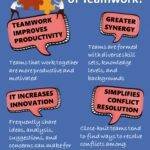
Open Space Technology forces self-organization and makes it possible to address a common complex challenge
The purpose of Open Space Technology is to liberate action and leadership in groups of any size. It does so by bringing together a large group of participants who are committed to addressing a complex problem and giving them full freedom to determine the agenda, the topics, and participation.
Open Space makes it possible to include everybody in constructing agendas and addressing issues that are important to them. Having co-created the agenda and free to follow their passion, people will take responsibility very quickly for solving problems and moving into action.
Four Structural Elements
1. Structuring Invitation
- Invite people to come and address a complex problem
- Invite participants to co-construct the agenda by posting sessions that they will convene on topics they are passionate about
- Invite participants to join any session that they care about
2. How Space Is Arranged and Materials Needed
- Chairs in concentric circles for 10–1,000 people in a large room or open space
- Microphones needed for groups larger than 40
- Large blank agenda posted on easels and flip charts, long tapestry paper, or whiteboard
- Agenda to include slots for enough concurrent sessions to accommodate what is likely to emerge given the challenge and the number of participants. (One rule of thumb is that 3 out of 10 participants will post a session, e.g., there will be 15 sessions posted from 50 participants.)
3. How Participation Is Distributed
- Everyone who cares about the challenge at hand and accepts the organizers’ invitation is included
- Everyone has an equal opportunity to contribute
- The “Law of Two Feet” governs the participation of all attendees in the various sessions. It says: “Go and attend whichever session you want, but if you find yourself in a session where you are not learning or contributing, use your two feet!”
4. Sequence of Steps and Time Allocation
| Short Form (90 minutes total time) | Long Form (Up to 3 days) | |
|---|---|---|
| Leader and/or fcilitator introduces 5 min. 20-45 min. the concept and mechanics of Open Space, including the Law of Two Feet and its Four Principles. | 5 min. | 20-45 min. |
| “Marketplace” opens: participants propose topies plus a time and place for groups to meet. | 15 mi. | 20-30 min. |
| Conveners facilitate sessions; groups develop recommendations and action plans. Notes are taken and published or posted. | 2 rounds of 30 min. sessions or 1 round of 60 min. | Several rounds of 60-90 min. sessions |
| Debrief, proceedings distributed, and closing. | 10 min. | 60 min. Daily |
Purposes and Objectives
- In an Open Space, people go where they feel they can contribute the most
- Its nature makes this structure a great way to boost self-organization within groups of any size
- It has the potential to truly involve everyone in addressing a complex problem
- Everyone has the freedom to bring attention to a topic they want to explore in more detail
- Each person can raise questions, challenges, and ideas
- Because the agenda is created by the participants, everyone will feel more engaged as a result
- People will take responsibility for solving problems quickly, and move into action without the need for central control.
- Generate action and build energy, commitment, and shared leadership
- Make sure that ALL of the issues that are most important to the participants are raised, included in the agenda, and addressed
Tips
- Open Space Technology is in particular powerful when used with large groups. It’s possible to use it with even hundreds of participants simultaneously.
- A compelling challenge and attractive invitation are key requirements
- Write up the entire proceedings in a single document, completed and distributed/shared immediately during the meeting
- The facilitator should introduce the Law of Two Feet and the mechanics of Open Space in a seriously entertaining fashion
- As the facilitator, notice when you form a judgment (about what is right or wrong) or an idea about how you can help, then “let it go”
Examples
- For management meetings of all stripes
- Immediately after a merger, for bringing together all the employees of both companies to shape next steps and take action together
- To share IT innovation prototypes and unleash collaborative action among widely distributed grantees


